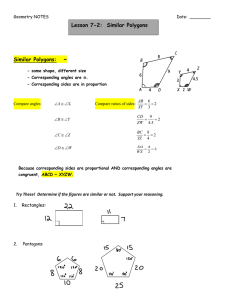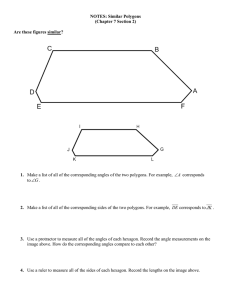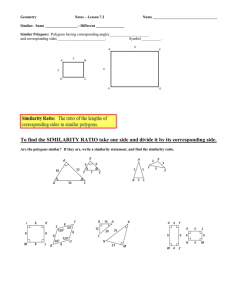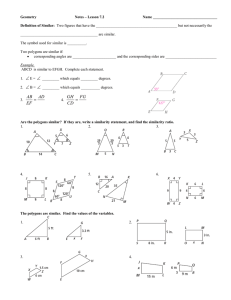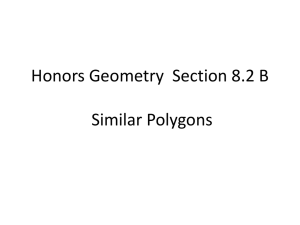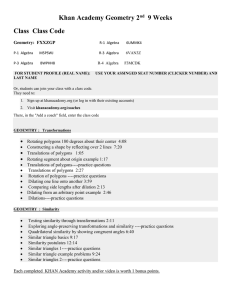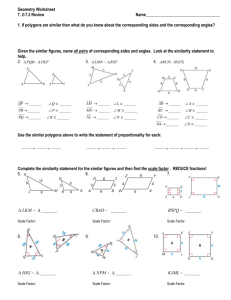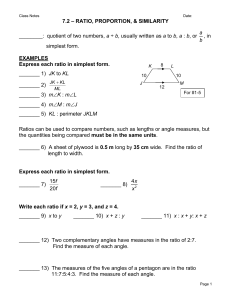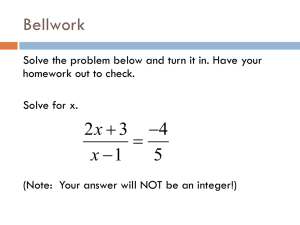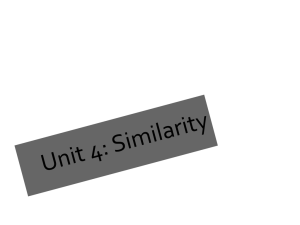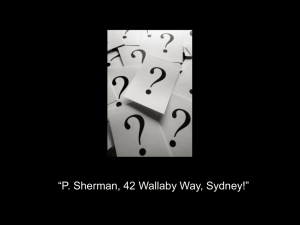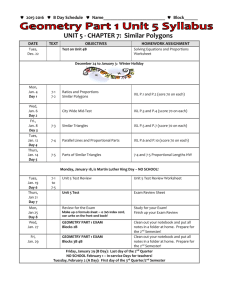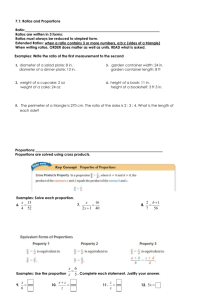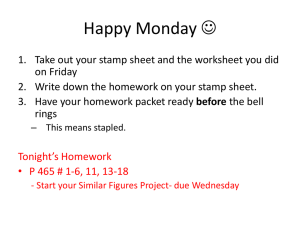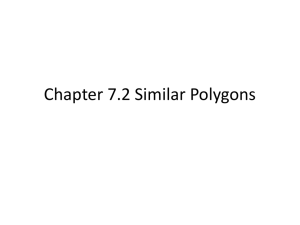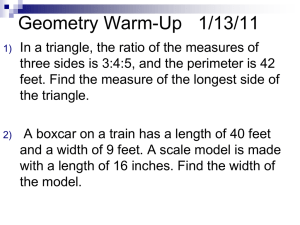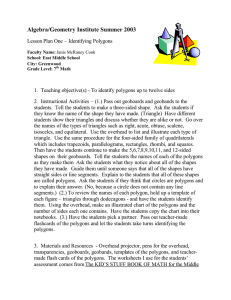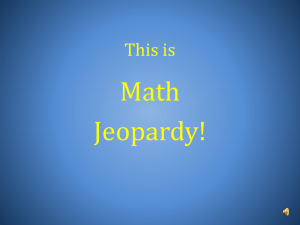Section 8 * 2 Similar Polygons
advertisement
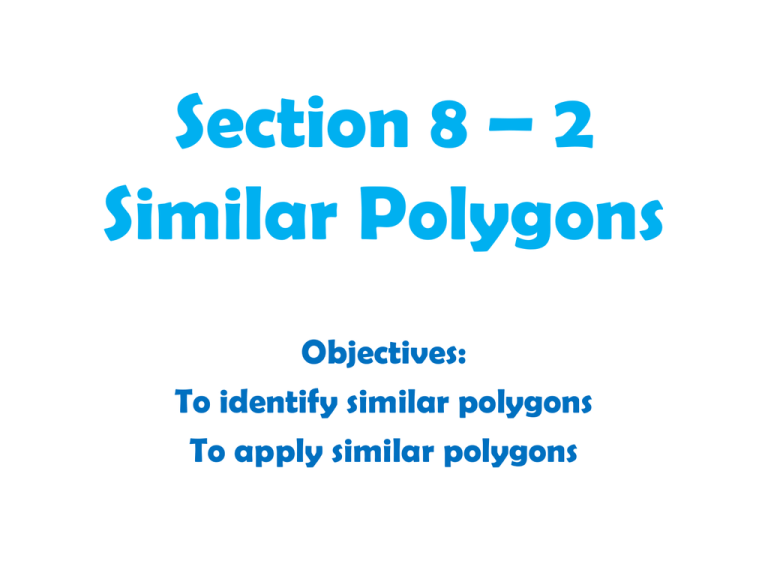
Section 8 – 2 Similar Polygons Objectives: To identify similar polygons To apply similar polygons Similar Polygons: Two polygons whose corresponding angles are congruent and corresponding sides are proportional. Similarity Ratio: The ratio of the lengths of the corresponding sides. Example 1 Understanding Similarity ABCD ~ EFGH. Complete each statement. 𝑚∠E = 𝐴𝐵 𝐴𝐷 = 𝐸𝐹 𝑚∠B = 𝐺𝐻 𝐹𝐺 = 𝐶𝐷 Example 2 Determining Similarity A) Determine whether the triangles are similar. If they are, write the similarity statement and give the similarity ratio. B) Sketch ∆XYZ and ∆MNP with ∠X ≅∠M, ∠Y≅∠N, and ∠Z≅∠P. Also, XY = 12, YZ = 14, ZX = 16, MN = 18, NP =21, and PM = 24. Can you conclude that the two triangles are similar? Explain. C) Determine whether the parallelograms are similar? Explain. Example 3 Using Similar Figures A) LMNO ~ QRST. Find the value of x. B) LMNO ~ QRST. Find SR to the nearest tenth. C) If ∆ABC ~ ∆YXZ, find the value of x. Homework: 8 – 2 Ditto Section 8 – 2 Continued… Objectives: To apply similar polygons Example 4 Real-World Connection A) A map has the dimensions 12 in. tall by 16 in. wide. You want to reduce the map to fit on a 4 in. by 6 in. notecard. What are the dimensions of the largest possible complete map that you can fit on the index card? B) You want to enlarge a 3 in. by 5 in. photo. If you have photo paper that is 12 in. by 16 in., what are the dimensions of the largest complete enlargement you can make? C) A painting is 24 in. wide and 36 in. long. The length of a postcard reduction of the painting is 6 inches. How wide is the postcard? Homework: Textbook Page 425 – 426; #2 – 18 Even
